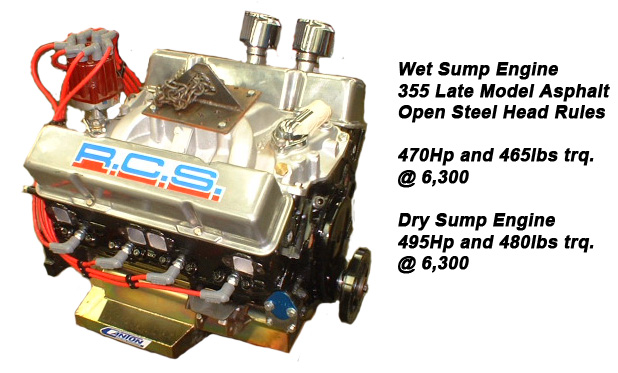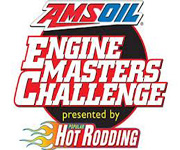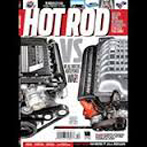
ASPHALT/DIRT OPEN ENGINES
RCS has been involved in Late Model Circle Track racing in both asphalt and dirt for the past 30 years. RCS's experience lies with big and small block engines, carbureted and injected engines, alcohol engines, E85 engines, 390 cfm engines, restricted plate engines, 350 & 500- 2 barrel engines, and popular today the GM and Ford Crate engines.
We understand that when you research to purchase an engine you want to do business with people that understand not only how to make power, but also make a power band and how to implement it to a particular track and or driver.
The open steel head asphalt engines are still very popular at many tracks across the country. These engines may be built with a variety of differences controlled by the tracks and sanctioning bodies, but still follow the NASCAR Late Model rules.
Power Output
Our 650cfm 4 barrel, dual plane intake, steel head 355's makeover 490hp and 480lbs of torque with a dry sump by 6,300 rpms. Our 500cfm 2 barrel, open plenum intake, steel head 355's makeover 440hp with a wet sump by 6,300 rpms. Each of these engine packages follow the NASCAR Late Model rules used by most tracks that support the Open Steel Head engine.
The 355 495Hp Steel head engine is an engine that has everything, hard acceleration off the corner and a hard charging top end rush at the top of the straight away, I've been told it's like hitting the Nos button. Driver's that can take advantage of the 2,000 rpm wide power band will get everything. There's not a crate engine out there that out powers it off the corner and or at the top of the straightaway. Heavy footed drivers could find the power to be either a benefit or difficult to comment hard to the throttle coming off the corner, but without a doubt you will find an improvement in your finish position. Drivers that have a handle on their chassis but are down on power find themselves normally in and around the 10th spot then moving to the top 5 positions.
We also inform our customers how to gain as much power and accelerating power from the air intake box to the end of the exhaust system. Accelerating Hp and torque is what moves the car, without it you'll never get off the corner fast enough to reach your needed straightway speed.
WHAT WOULD YOU DO
If the new engine you purchased has more power than your old engine and the car's straightaway and entrance speed is greater, what should you do? Slow the car down to drive through the corner based on your current setup or readjust the setup based on the car's new entry speed? Although circle track racing has to two straightaways you just can't use that new power for just drag racing down them. You should make the chassis setup work with this new entrance speed, although the physics that support controlling the car can only be mastered by understanding the car’s chassis and geometry to achieve this. That being said a balance between the two would make a huge improvement in the car's performance.
We have seen so many drivers in the past brake their cars harder or get off the throttle earlier than they normally would entering the corner due to the higher speeds down the straightaway. We feel that many drivers when they experience an increase in car speed on the straightaway, mainly because it’s different they lose their depth perception as to where they are on the track and how fast the car is actually moving and the perception of how much distance (feet per second) the car is traveling in given second of time.
Driver's that don't increase their corner speeds find it difficult to commit to hard throttle coming off the corner due to the added power and acceleration affecting their exit speeds. We feel the faster the corner speed the faster the straightaway speed is. Yes there are limiting factors to all of this, but the racer that takes advantage of the whole track makes everyone else scratch their heads walking away as the winner.
With added entrance speed different springs and shock rates are required to deal with increased forces being applied to the tires, while this added weight transfer also affects sway bar adjustments and bar rates as well. In most cases it’s not that hard to get a handle on a new setup, small changes in the setup can make big differences on the track and in many cases a slight change in driving techniques brings it all together.
WHAT DO YOU GET
When purchasing a RCS Racing Engine they are fully assembled and dyno tested for leaks, mechanical operations and tuned for max power. Each engine comes with an assembly warranty, which covers any workmanship performed by RCS for a period of one year. Part and related labor from part failure warranties if applicable would be warranted by the part manufactures if accepted.

HAPPY CUSTOMERS
Happy customers like Larry Behanna and Dan Lewis run stronger now driving RCS powered engines. These men have gained more respect from the fan's, driver's, and car and track owners, putting on great shows driving hard from the back to front runners, running side-by-side with the track champions and in many cases running out front.
What makes these guys’ run so well is that they are open minded racers. They run well on extremely small budgets and make an impressive showing because we have advised them not to make changes without knowing the science behind the change, always focusing on implementing the engines power into the chassis and then to the track.
At RCS we don't believe that money buy's victories, knowledge is the power required for victories, and knowledge will improve one's abilities. I'm not saying that we have all the answers; we just advise how to find them. We also need racers that are willing to give and take, as we continue to update our engine packages it takes feedback from the racer to make these relationships work.


